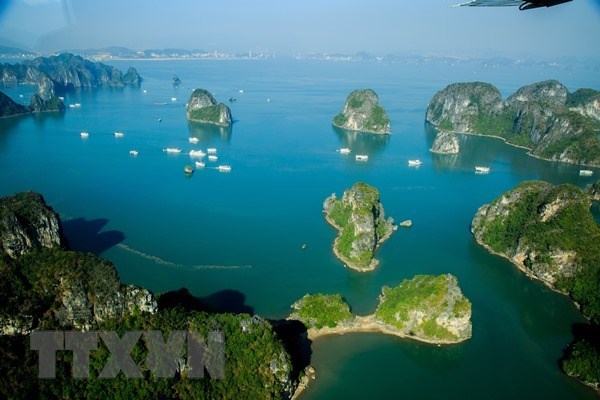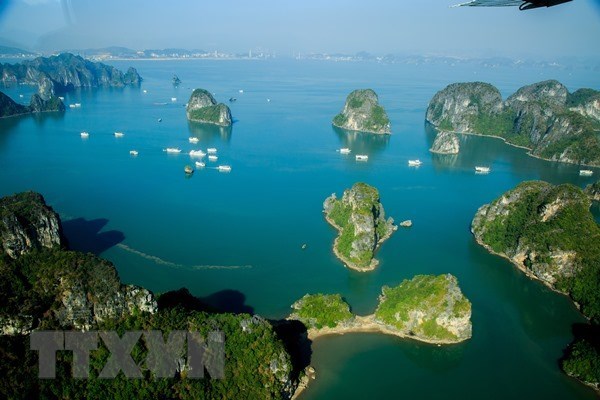



An aerial photo of Ha Long Bay (Photo: VNA)
The organising board plans to show 200 to 250 works at the
exhibition slated for October in the northern province of Quang Ninh, as part
of the National Tourism Year 2018 themed Ha Long – Quang Ninh.
Candidates can send single photographs or a group of photographs on two topics:
Ha Long – Quang Ninh – from new angles or a free topic on Vietnam.
The photographs should have been taken in the last two years. Each photographer
can send up to eight works for two topics, a maximum three of which are groups
of photographs. The entries should not have been submitted to any previous
national and international contest hosted by the Ministry of Culture, Sports
and Tourism and the Vietnam Association of Photographic Artists.
The entries should be submitted to the website anhnghethuatvietnam2018.com.
The organising board will award two gold medals, along with 30 million VND
(1,318 USD) in cash, four silver, six bronze and 10 consolation prizes.
The gold prize winners at this contest will be eligible to apply for the State
Prize and Ho Chi Minh Prize in Literature and Arts, the highest honours in
Vietnam.
More information on the contest can be accessed at the website
anhnghethuatvietnam2018.com or Facebook:
https://www.facebook.com/PhotographDepartment
Last year, Quang Ninh welcomed more than 10 million tourists, 4 million of whom
came from other countries. The province aims to attract more than 12 million
visitors this year, including 5 million foreigners.
Under the Overall Plan for Tourism Development in Quang Ninh, Quang Ninh
strives to become an international tourism centre and a leading tourism
destination in Vietnam with modern infrastructure and diverse, high quality and
competitive tourism products.
By 2020, Quang Ninh aims to welcome 15 million - 16 million tourists, including
7 million foreigners, and rake in 30 trillion VND - 40 trillion VND (1.3
billion USD - 1.7 billion USD) in revenue. The tourism sector is expected to
contribute 14-15 percent to the gross regional domestic product (GRDP).
With a range of stunning landscapes, clear turquoise sea and spectacular
limestone pillars together with numerous tourism investment projects, Quang
Ninh boasts huge potential to develop tourism.
The province has a coastline of more than 250 kilometres and 2,000 islets,
two-thirds of the total in Vietnam. The spectacular stretch of coast connects
the UNESCO-recognised World Heritage Site of Ha Long Bay with majestic natural
scenery, Bai Tu Long Bay, Van Don and Co To islands and Tra Co beach with Cat
Ba National Park in the northern port city of Hai Phong.
Along with the renowned Ha Long Bay, Quan Lan, Minh Chau, Ngoc Vung, Dai
beaches in Van Don island district and Tra Co and Vinh Thuc in Mong Cai city
have grown in stature among domestic and international tourists thanks to their
breathtaking sea and coral reef.
Source: VNA